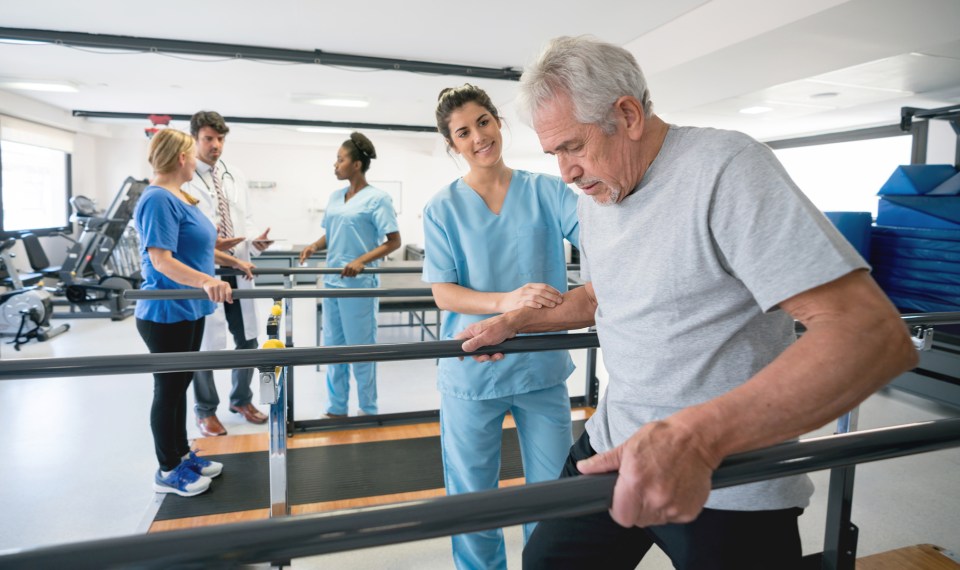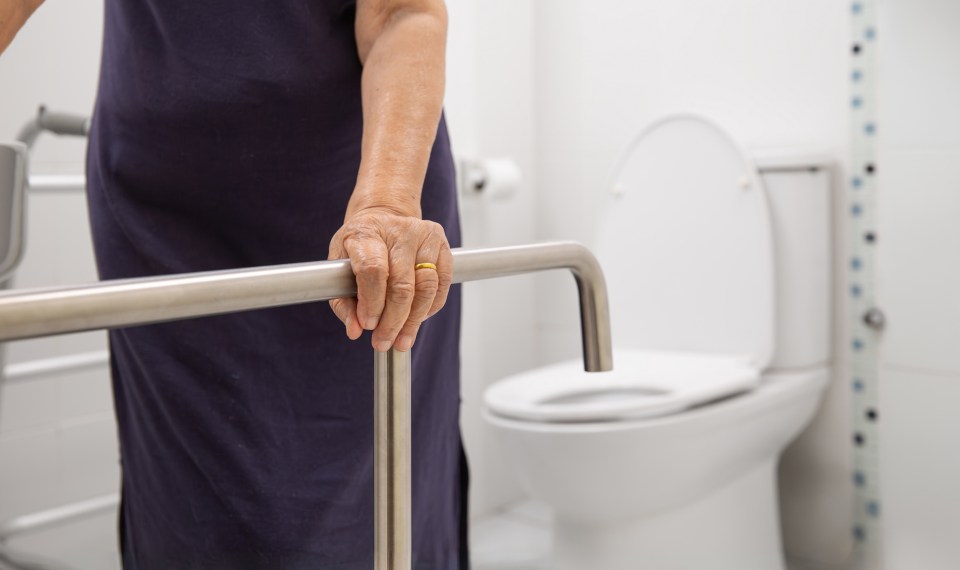Orthostatic hypotension (OH) is a condition characterized by a drop in blood pressure upon standing that leads to symptoms such as dizziness, lightheadedness and, in some cases, fainting.
Older adults are often more prone to this condition since the body’s ability to regulate blood circulation to meet the needs of organs and other systems, also known as hemodynamic homeostasis, becomes less effective with age.
The drop in blood pressure caused by OH upon standing can affect cerebral blood flow and compromise brain perfusion, which can lead to momentary episodes of confusion and balance issues. These momentary episodes could put older adults at an even greater risk of falling (Masaki, 1998).
The prevalence of OH in older adults is as high as 60% for those in a long-term care or acute-care setting (Hajjar, 2005). Physical therapists working with this population should be mindful of the increased fall risks and assess for OH and provide treatment interventions.
Know the Signs of OH and Risk Factors in Older Adults
Given the increasing aging population, clinicians are likely to encounter OH more frequently. A thorough patient history, accurate measurement of orthostatic blood pressure and evaluation of the autonomic nervous system are crucial for clinical guidance in managing OH.
The main goals for addressing OH are to achieve volume expansion and vasoconstriction. The clinical team, including the physical therapist and physician, should first identify any medications that may be contributing to OH, and next, identify and address any conditions that could exacerbate OH.
Conditions that may contribute to OH include:
- Dehydration
- Time of day (early morning after nocturnal diuresis)
- Rising quickly after prolonged sitting or recumbency
- Prolonged motionless standing
- Physical exertion, especially vigorous or isometric exercise
- Alcohol ingestion
- Carbohydrate-heavy meals
- Heat exposure or fever
- Straining during micturition or defecation (Figueroa, 2010)
Assessing OH
According to the Centers for Disease Control Guidelines for Properly Assessing OH, the procedure for measuring OH is:
- Have the patient lie down for five minutes; then check their blood pressure and heart rate.
- Have the patient stand for three minutes; then check their blood pressure and heart rate at one minute and again at three minutes.
If the patient has a drop in blood pressure of ≥20 mm Hg, diastolic BP of ≥10 mm Hg or is experiencing lightheadedness or dizziness, they have OH.
Understanding the Results
It is helpful to understand a few things related to the results of OH testing. First, most individuals with OH will experience a drop in blood pressure in the first minute of standing. Second, those who experience a continued drop in the second minute of standing tend to have an increase in severity of OH. Any drop in BP after three minutes is uncommon and can indicate vasovagal syncope, which is a sudden drop in BP and heart rate often associated with a stress trigger (ie: heat exposure, sight of blood) or a mild or early form of sympathetic adrenergic dysfunction.
A recent study found that two-thirds of older adults with OH did not report typical symptoms of light-headedness (Claffey, 2022). This study also found that symptoms did not correlate with the amount of blood pressure drop. These patients who have asymptomatic OH still commonly experience unexplained falls (Claffey, 2022). Because of this, clinicians should evaluate orthostatic hypotension in elderly patients who are having unexplained falls.
Treating Orthostatic Hypotension
The recommendations for treating orthostatic hypotension include pharmacological and non-pharmacological options. Because many patients who have OH have concomitant hypertension when in the supine and seated positions, use of medications that increase blood pressure should be limited and must be used judiciously. Non-pharmacological approaches can be very effective in treating OH. The following clinical approach is recommended:
- Underlying conditions that can exacerbate OH, such as anemia, need to be addressed.
- Have the patient wear an abdominal binder and compression stockings when out of bed.
- Make sure they are properly hydrated. Have the patient drink two 8-ounce glasses of cold water prior to standing. This will help increase blood volume and vasoconstriction at the same time. Additionally, salt and fluids can increase the blood volume, reducing the effects of OH.
- Have the patient sleep with the head of the bed elevated 4 inches or about 30 degrees. This reduces supine hypertension and minimizes the severity of OH when getting up from the bed.
- Counter maneuvers such as sometric contractions of muscles below the waist can help to increase blood flow back to the heart and decrease OH. These could include toe-raising, leg crossing and contraction, thigh muscle co-contraction, bending at the waist, slow marching in place and leg elevation.
- Medications such as midodrine or fludrocortisone can increase blood pressure levels. Droxidopa can be effective with patients who have neurogenic OH. These medications have to be dosed carefully and provided at the right times due to risk of increased supine hypertension.
- Education related to the symptoms experienced prior to syncope can be helpful for the patient.
- Lifestyle changes include having the patient avoid taking hot showers, drinking warm liquids prior to getting out of bed, eating heavy and high-carbohydrate meals or consuming alcohol. Exercising in a recumbent position or in a pool will help reduce the risk of falls with OH.
For hypertensive individuals without pre-existing OH, antihypertensive medications can be used safely with a low risk of developing OH. For individuals with pre-existing OH or those who develop OH while on antihypertensive medications, avoid classes of medications that may exacerbate OH, and consider the use of classes that can improve blood pressure changes upon standing as appropriate treatment strategies.
Specific classes of antihypertensive medications can impact OH differently. Peripheral vasodilators such as α-adrenoceptor antagonists and nondihydropyridine calcium channel antagonists have been linked to exacerbating blood pressure changes upon standing and leading to OH.
On the other hand, ACE inhibitors, angiotensin-receptor antagonists and β-adrenoceptor antagonists with intrinsic sympathomimetic activity are less likely to worsen OH. Proper management of electrolyte imbalances can help reduce the risk of developing OH when using diuretics. (Biaggioni, 2018)
The Link Between OH Management and Fall Prevention
The management of orthostatic hypotension aims to alleviate symptoms, improve standing time and function and minimize the risk of falls. Physical therapists can assist in this by utilizing a comprehensive approach that includes non-pharmacologic strategies, and appropriate medication selection can help optimize the management of this condition.
- Measuring Orthostatic Blood Pressure. (n.d.). Centers for Disease Control and Prevention. https://www.cdc.gov/steadi/pdf/Measuring_Orthostatic_Blood_Pressure-print.pdf
- Gehrking JA, Hines SM, Benrud-Larson LM, Opher-Gehrking TL, Low PA. What is the minimum duration of head-up tilt necessary to detect orthostatic hypotension? Clin Auton Res. 2005;15:71–75. [PubMed] [Google Scholar]
- Gibbons CH, Freeman R. Delayed orthostatic hypotension: a frequent cause of orthostatic intolerance. Neurology. 2006;67:28–32. [PubMed] [Google Scholar]
- Claffey, P., Pérez-Denia, L., Lavan, A., Kenny, R. A., Finucane, C., & Briggs, R. (2022). Asymptomatic orthostatic hypotension and risk of falls in community-dwelling older people. Age and ageing, 51(12), afac295. https://doi.org/10.1093/ageing/afac295
- Figueroa, J. J., Basford, J. R., & Low, P. A. (2010). Preventing and treating orthostatic hypotension: As easy as A, B, C. Cleveland Clinic journal of medicine, 77(5), 298–306. https://doi.org/10.3949/ccjm.77a.09118
- Biaggioni I. (2018). Orthostatic Hypotension in the Hypertensive Patient. American journal of hypertension, 31(12), 1255–1259. https://doi.org/10.1093/ajh/hpy089
- Masaki KH, Schatz IJ, Burchfiel CM, et al. Orthostatic hypotension predicts mortality in elderly men: the Honolulu Heart Program. Circulation. 1998;98(21):2290–2295. [PubMed] [Google Scholar]
- Hajjar I. Postural blood pressure changes and orthostatic hypotension in the elderly patient: impact of antihypertensive medications. Drugs Aging. 2005;22(1):55-68. doi: 10.2165/00002512-200522010-00004. PMID: 15663349.
The content of this site is for informational purposes only and should not be taken as professional medical advice. Always seek the advice of your physician or other qualified healthcare provider with any questions you may have regarding any medical conditions or treatments.



